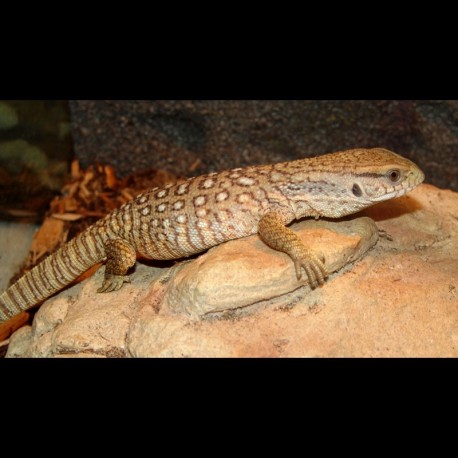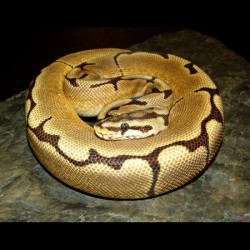No Products
 View larger
View larger Online Only Price
Savannah Monitors (Babies)
Savannah Monitors (Varanus exanthematicus)
A.K.A. Bosc's Monitors
More Info
The Savannah Monitor (Varanus exanthematicus) is a species of monitor lizard native to Africa. The species is known as Bosc's Monitor in Europe, since a French scientist named Louis Bosc first described the species. It belongs to the subgenus Polydaedalus along with the Nile Monitor, the Ornate Monitor and other monitors.
Description
The savanna monitor has powerful limbs for digging and climbing, very powerful jaws that can easily crush bone and very strong, sharp teeth. Maximum size is usually 4 feet and rarely more than 5 feet in length. The pattern on the back of Varanus exanthematicus is uniformely grey to pale yellow. The monitor has a short box-like head and large dorsal and nuchal scales. Its short tail is round and stores fat as an energy reserve.
Defense
The Savanna Monitor typically defends itself with its strong bite and powerful jaws. Its thick hide makes it resistant to most animal bites and herpetologist Robert Sprackland claims that the lizard is immune to most snake venom. When confronted by a snake or other large predator the monitor rolls onto its back and grasps a hind leg in its mouth forming a ring with its body and making itself harder for the animal to swallow whole. Savanna Monitors, like most monitors, will expand their throat and body. They also will gape and let out a slow, deep hissing sound when threatened.
Diet
Savannah Monitors are usually carnivorous but the occasional Savannah Monitor in captivity will eat plants, vegetables, and fruit, its preferred diet consists of small mammals, insects, eggs, birds, and dead animal remains. The feeding response of a savannah monitor is very aggressive. They find and track prey by using their Jacobson's organ which is located in the roof of their mouths. The Jacobson's organ is a secondary olfactory sense organ for many animals including reptiles. Once a savannah monitor senses food it goes into an overdrive. These monitors have such an appetite they will eat themselves to death if provided the chance.
Pet owners of Savannah Monitors also feed their monitor insects, fish, chicken, beef, and turkey as well as eggs and occasionally fruit/vegetables.
Range
Its range extends throughout sub-Saharan Africa from Senegal to Eritrea and northern Zaire. V. exanthematicus is primarily a ground dwelling species that shelters in burrows, although they are sometimes found in bushes or low trees. In the coastal plain of Ghana, juvenile V. exanthematicus are often associated with the burrows of the giant cricket Brachytrupes.
Threats
The species is hunted for its leather and meat. The skins of the species are important in the international leather trade and originate mainly from Chad, Mali and Sudan. In 1984, the skins of over 1,000,000 dead savanna monitors were exported for the leather trade as opposed to a mere 900 live specimens for the pet trade.
In Captivity
This species is readily available in the pet trade. Savannah Monitors can be very tame and docile if trained them while still in infancy. Juvenile animals are collected from several countries in West Africa (mainly Ghana, Togo, Benin and Nigeria) and exported worldwide. Animals sold as "captive bred", "captive farmed" or ranched are most often the offspring of gravid females collected during the breeding season.The eggs are later incubated by exporters. However, Savanna Monitors have been bred in captivity with some degree of regularity. Adult specimens sometimes become unwanted pets due to their large size. Caution needs to be taken in the care because these monitors live upwards of 10-12 years in captivity. The great majority of these animals are fed a rodent only diet and are not given sufficient basking and exercise areas for digestion of such meals. Furthermore, pet Savannah Monitors are given wildly insufficient humidity levels. These monitor lizards become dehydrated and/or obese, lethargic, and usually die early due to illness, liver complications, or even stress from overhandling.
The Savanna Monitor is often confused with the White Throat Monitor (Varanus albigularis) which can grow to lengths of 1.5–2 m (4 ft 10 in–6 ft 7 in).
Customers who purchased this item also bought:
-

Spider Ball...
Spider Ball Pythons (Python regius)
$79.00


